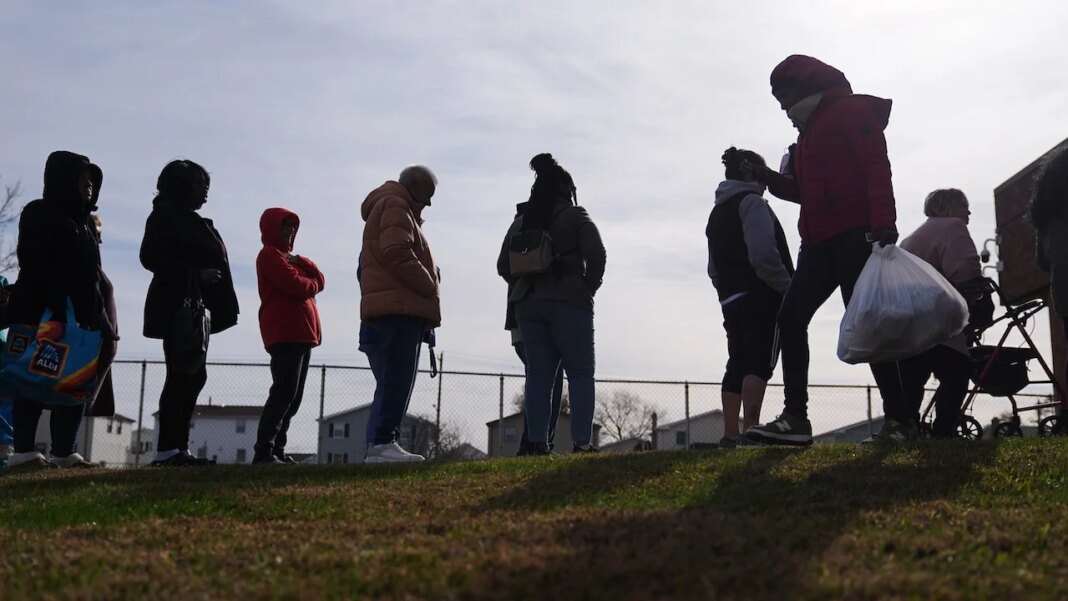Supreme Court Halts Full Funding for SNAP Amid Government Shutdown
In a significant move, the Supreme Court recently granted an emergency appeal by the Trump administration, temporarily blocking a court order aimed at fully funding the Supplemental Nutrition Assistance Program (SNAP) during a government shutdown. This decision comes as uncertainty looms over the food assistance program that impacts roughly 1 in 8 Americans, predominantly lower-income families.
Court Orders and Administration Response
A judge had mandated that the Trump administration fulfill SNAP funding requirements by Friday. However, the administration responded by requesting the appeals court to suspend any orders that would compel it to exceed available funds in a contingency pool. Instead, the administration sought to provide partial SNAP payments for the month.
States React
Despite the federal uncertainty, several states acted swiftly to ensure their residents received vital SNAP benefits. In Wisconsin, over $104 million in monthly food benefits became available at midnight for approximately 337,000 households. Democratic Governor Tony Evers credited the rapid availability to a prompt request submitted to the state’s electronic benefit card vendor.
Oregon also stepped up, with Governor Tina Kotek announcing that state employees “worked through the night” to authorize full November benefits, ensuring families could purchase groceries as needed. Hawaii, too, prepared ahead of time, allowing it to quickly submit the necessary information for processing.
A Mixed Bag Across the Nation
In addition to Wisconsin and Oregon, other states like California, Washington, Kansas, and New Jersey confirmed that they had promptly issued full SNAP benefits. Some states indicated that they expected to deliver full benefits over the weekend or early next week, while others awaited further direction from the federal government.
Uncertainty for Recipients
This judicial entanglement has caused palpable anxiety among many low-income Americans who depend on SNAP. While the program offers a maximum monthly benefit of nearly $300 for individuals and up to nearly $1,000 for families of four, many participants rely on lower amounts based on their incomes.
For instance, Jasmen Youngbey from Newark, New Jersey, found herself in a precarious situation, waiting in line at a food pantry on Friday with an empty SNAP account. As a single mother of two young children, she stressed, “Not everybody has cash to pull out and say, ‘OK, I’m going to go and get this,’ especially with the cost of food right now.” Fortunately, later that day, Youngbey received her monthly benefits.
Legal Tensions Amplified
Compounding the situation are legal disputes regarding SNAP. Originally, the Trump administration declared that SNAP benefits would not be issued for November due to the government shutdown. However, two judges countered this stance, ruling that the administration could not completely bypass the distribution of benefits. Among the judges was U.S. District Judge John J. McConnell Jr., who specifically ordered the government to draw from an emergency reserve fund exceeding $4.6 billion to cover SNAP costs for the month.
In a counterargument, the administration contended that it was unwilling to tap into additional funds available for maintaining other child hunger initiatives. The dispute underscores complex issues surrounding governmental authority and the separation of powers, with the administration asserting that the judges overstepped their roles by ordering full SNAP funding.
Varying State Approaches to Food Aid
Amid this federal turmoil, states have taken varying approaches to distributing SNAP benefits. Colorado and Massachusetts announced they would begin disbursing full payments as soon as Saturday, while New York projected that access to full benefits would start by Sunday. New Hampshire and other states also planned to provide full benefits by the weekend. Meanwhile, states like North Carolina opted for partial payments initially, but full distribution was anticipated within days.
In a unique move, Delaware’s Governor Matt Meyer decided to use state funds to offer initial relief payments to SNAP recipients, in an effort to mitigate the impact of federal uncertainties.
Conclusion
This situation reveals the delicate balance of authority and responsibility between federal and state governments amid a government shutdown. With SNAP being a lifeline for millions, the outcomes of these legal battles and administrative decisions remain critical for countless Americans navigating food insecurity in these turbulent times.



